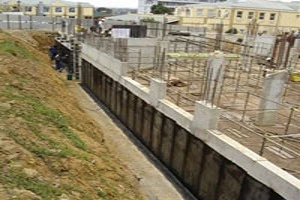
1.retaining wall Waterproofing – importance
Retaining walls are critical structures that are designed to hold back soil. They are commonly used in Building construction projects to create Floors below ground level and provide stability to structure above. Because retaining walls are in constant contact with soil, they are susceptible to water infiltration, which can cause significant damage to the wall and surrounding structures. Waterproofing a retaining wall is, therefore, essential in ensuring its longevity and durability.
The importance of retaining wall waterproofing cannot be overstated. It provides an effective barrier against water penetration, which can lead to structural damage, corrosion of Reinforcement inside RCC, and potential collapse. Waterproofing the retaining wall can also prevent water from seeping into adjacent structures or properties, protecting them from damage.
Another benefit of retaining wall waterproofing is that it can help improve the aesthetics of the wall. Water can cause discoloration, staining, and algae growth, which can detract from the overall appearance of the wall. Waterproofing can prevent these issues, ensuring that the wall remains visually appealing.
In addition to these benefits, waterproofing a retaining wall can also help increase the property value of a building or structure. A waterproofed retaining wall is a sign of good maintenance, and it can enhance the overall appeal and value of the property.
2. available systems for retaining wall Waterproofing
There are several different systems available for waterproofing retaining walls, each with its unique features and benefits. The choice of system will depend on various factors such as the type of wall, the location, and the level of water exposure. Here are some of the most common systems used for retaining wall waterproofing:
- Sheet Membrane Systems: This system involves the installation of a waterproofing membrane that is made from materials such as APP, SBS, HDPE, EPDM or PVC. The membrane is applied to the surface of the wall and provides a barrier against water infiltration
- Liquid Applied Membrane Systems: This system involves the application of a liquid coating, which is sprayed or rolled onto the surface of the wall. The liquid membrane cures to form a seamless, waterproof barrier.
- Cementitious Coatings: This system involves the application of a cement-based coating to the surface of the wall. The coating is designed to be breathable, allowing moisture to escape while preventing water from entering the wall.
- Bentonite Clay Systems: This system involves the installation of a bentonite clay layer, which swells upon contact with water, creating a barrier against water infiltration. Bentonite clay systems are typically used in below-grade retaining walls.
- Drainage Systems: This system involves the installation of a drainage layer behind the retaining wall, which allows water to flow away from the wall and prevents hydrostatic pressure from building up.
- Drainage composite system, which is a layer of geotextile fabric that is laminated to a layer of drainage matting. It is used to protect waterproofing systems from damage and to provide an outlet for water. Drainage composite is commonly used in retaining walls that have a high level of water exposure.
- Crystalline Waterproofing: Crystalline waterproofing is a chemical treatment that reacts with water to form crystals. These crystals fill the capillaries and micro-cracks in the concrete, creating a permanent barrier against water. Crystalline waterproofing is commonly used in below-grade retaining walls.
- Injection Waterproofing: Injection waterproofing is a method where a liquid sealant is injected into cracks and voids in the retaining wall. The sealant reacts with water to form a solid, impermeable barrier against water. Injection waterproofing is commonly used in concrete retaining walls. There are Hydrophilic system also available.
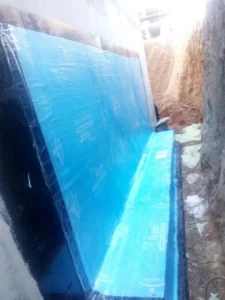
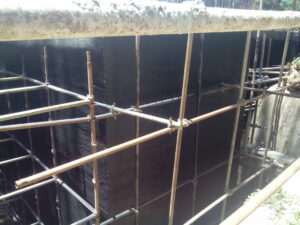
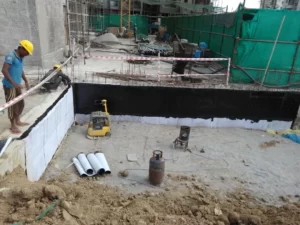
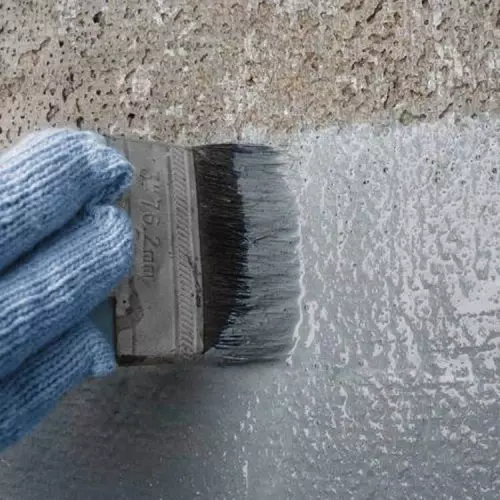
3. retaining wall Waterproofing
There are various systems available for retaining wall waterproofing, and the selection of the right system depends on various factors such as the type of retaining wall, the location, and the level of water exposure. It is essential to consult with a professional waterproofing contractor to determine the most appropriate system for your retaining wall.
GEOLIZ WATERPROOFERS PVT. LTD.
Waterproofing Products & Services Guide
For details on other waterproofing products & Services
